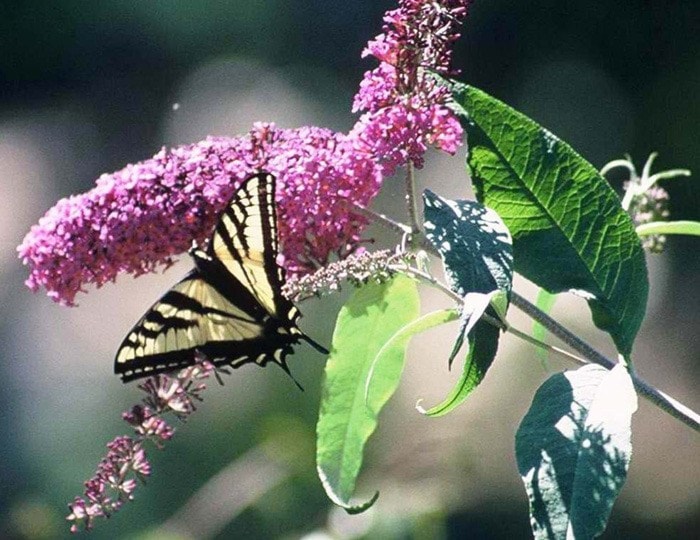How long is it since you saw a butterfly? These emblems of summer are fast disappearing from the landscape. Pesticides have taken their toll and natural food plants are lost when wild habitat is replaced with urban subdivisions. Creating a butterfly garden will help restore these colourful pollinators to the landscape. An added bonus is that some of the flowers suited to butterflies also attract hummingbirds.
 To bring butterflies to a garden, there must be food plants for the larval, or caterpillar, stage of their life cycle, as well as nectar-rich flowers for the adults. Caterpillars are voracious but often picky eaters. Spring Azures relish ocean spray and spirea, while Mourning Cloaks need willows. Planting a patch of stinging nettles in a tub or out of the way corner of the garden could entice Red Admirals and Satyr Commas. Plants of the mustard and cabbage family attract Sara Orange Tip, Cabbage White (the commonest butterfly, yet non-native), and Mustard White. The caterpillar of our largest, most striking butterfly, the Western Tiger Swallowtail, feeds on poplar and willow leaves. Apple trees are a food source for the sphinx hawk moth.
To bring butterflies to a garden, there must be food plants for the larval, or caterpillar, stage of their life cycle, as well as nectar-rich flowers for the adults. Caterpillars are voracious but often picky eaters. Spring Azures relish ocean spray and spirea, while Mourning Cloaks need willows. Planting a patch of stinging nettles in a tub or out of the way corner of the garden could entice Red Admirals and Satyr Commas. Plants of the mustard and cabbage family attract Sara Orange Tip, Cabbage White (the commonest butterfly, yet non-native), and Mustard White. The caterpillar of our largest, most striking butterfly, the Western Tiger Swallowtail, feeds on poplar and willow leaves. Apple trees are a food source for the sphinx hawk moth.
Perennial flowering plants that are rich in nectar will provide food for adult butterflies. Naturescape BC recommends lilac, mock orange, phlox, mallow, pearly everlasting, chrysanthemum, stonecrop, zinnia, asters, and herbs, such as mint, rosemary and sage. The large, purple blossoms of the buddleia bush are a favourite for butterflies and hummingbirds. Other double-duty options are bee balm, elderberry, and columbine.
The life cycle of butterflies is most remarkable, going from egg to caterpillar, to pupa, before metamorphosing into an adult. Eggs are often laid under leaves on the larval food plants, so the caterpillars can start munching as soon as they hatch. Caterpillars range in colour from pale green to brightly striped, and from smooth to spiky, depending on the species. Eventually they stop eating and turn into a pupa. This stage can look like a bird dropping, a bit of twig or even a shiny gold nugget. One morning, the pupa breaks open and a butterfly emerges. Slowly it spreads its damp and folded wings, drying them in the sun. This is the most amazing sight, seldom witnessed in our modern world. The perfect embodiment of summer then takes flight, bringing colour and beauty to the garden.
Time to get planting; don’t forget the stinging nettles!
Anne Murray is a local naturalist, blogger and author of two books on nature in the Fraser River delta, available from local bookstores; see www.natureguidesbc.com and www.natureguidesbc.wordpress.com
